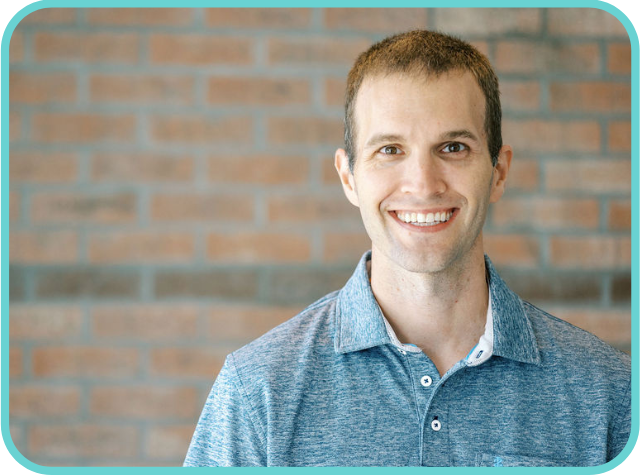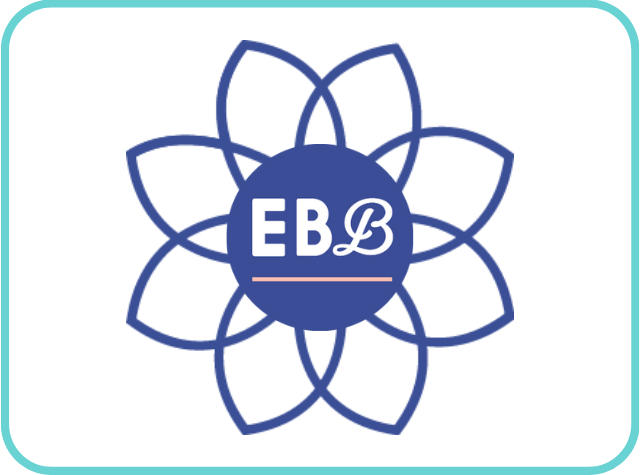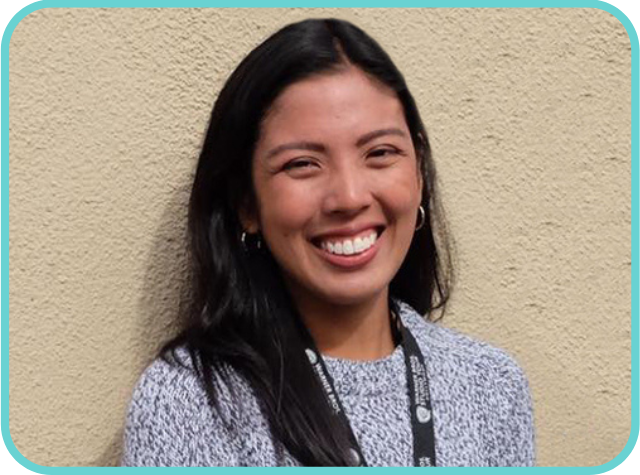
Our Vision and Mission
We envision a world in which all birthing families have access to safe, respectful, evidence-based, and empowering care.
Our mission is to help birth workers build the evidence based knowledge, skills, and power they need to protect families’ abilities to give birth with empowerment. The work we do goes on to impact families who are searching for accurate information to empower their prenatal, birth, and postpartum experiences!
Our mission-based programs benefit birth workers because we provide education on research, mentorship in how to navigate a broken health care system, and the confidence to be a change agent working for anti-racist and inclusive health care.
If you want to be part of our movement, join the Evidence Based Birth® Professional Membership. An online continuing education community for birth workers who want to create change!
Our Why

Why do we do what we do? Our team has personally witnessed unacceptable treatment of pregnant, birthing, and postpartum families in many places around the world. Research backs up our experiences and shows that the following problems abound:
- Unsafe, outdated, racist, non-inclusive care
- High levels of interventions and lack of choices
- Poor outcomes, birth trauma, and preventable complications
- Misinformation, coercion, and pressure
In addition to the harm that families experience, birth workers on the front lines are at high risk for secondary trauma as well as burnout, shortened career spans, and harm to their own physical and mental well-being.
At Evidence Based Birth®, we are not okay with the status quo.
We support and uplift birth workers who are feeling alone, traumatized, and helpless, and help them find community, hope, and the strength to use their voice. We help birth workers get these results by making evidence-based information easily accessible, nurturing a community of like-minded advocates, teaching high-quality trainings on important skills, and providing easy-to-read handouts to share with clients.
We admire and look up to birth workers who are building their skill sets so that they can get positive results with their clients, all while by being part of a bigger movement of change makers. You are showing up for birthing families amid difficult circumstances, and we appreciate you!!
Become a Pro Member:
Our Founder & Team EBB
 Evidence Based Birth® was founded by Rebecca Dekker (she/her), a mother of 3 and registered nurse with her PhD, who got fed up with how the system treats birthing families.
Evidence Based Birth® was founded by Rebecca Dekker (she/her), a mother of 3 and registered nurse with her PhD, who got fed up with how the system treats birthing families.
As a first-time mom, Dr. Dekker experienced birth trauma when she was separated from her newborn baby for three hours after giving birth. In contrast, she felt awed and empowered by the respectful and evidence based care she received at the home birth of her second child. After several years of writing at Evidence Based Birth® and working as a nursing professor and research scientist, Dr. Dekker found the courage to leave academia and focus on advocating for change full-time.
Today, the Evidence Based Birth® Team has grown to include research scientists, birth workers, and advocates from around the world who are passionate about safe, respectful, evidence-based, and empowering care!
Learn How EBB Engages in Birth Advocacy.
At EBB, we’ve taking steps to increase our support for birth workers of color and amplify the solutions presented by Black and Brown birth workers. We also know that we must hold white birth workers accountable, including EBB Instructors, on their journey towards anti-racism. Our inter-cultural team is committed to being a part of stopping the generational cycle of racial trauma and to working towards a more just and inclusive world for all.
Structure of Evidence Based Birth®
Evidence Based Birth® started in 2012 as a passion project and a blog, but today it has grown beyond our wildest dreams. We are a woman-owned, U.S.-based C-Corp (no outside investors) with completely remote/virtual team members who work relentlessly to make research evidence on childbirth freely accessible to the public.
The EBB website and our team are entirely funded by our own programs (for example, the EBB Professional Membership and EBB Instructor program), sales from our Online Shop, proceeds from the EBB Childbirth Class workbook, and sales from Dr. Dekker’s book, “Babies Are Not Pizzas: They’re Born, Not Delivered.”
So that we can remain entirely free from conflicts of interest, EBB does not accept funding, such as advertising or sponsorships, outside of our own programs and product sales. EBB also does not provide or sell any customer data to any other organization.
We continually invest the money we earn from our hard work back into supporting our team’s salaries, improving the articles and other free resources we offer to the public, and providing scholarships and reduced fees to make our programs more accessible to traditionally marginalized groups.
We work primarily in three teams: Programs Team, Research Team, and the Content Team. Team EBB has been fully remote since our inception, and our structure has allowed us to remain nimble, recruit incredible team members, and expand our ability to affect change worldwide. For more info about joining our team, visit ebbirth.com/careers.
Our team:

Founder & CEO
Dr. Rebecca Dekker
she/her
In a parellel world, Rebecca is a musician, painter, gardener, and basket weaver. But somehow she ended up as a nurse, mom of 3, birth researcher, and entrepreneur, in that order and now all at once!

Pro Membership Coordinator & Programs Team Manager
Chanté Perryman
she/her
This is Chanté and she loves Jesus, reading, watching movies with her family, and exploring local restaurants when traveling. Her dream is to retire in a tiny house and explore the country.

Instructor Program Coordinator
Rikki Jenkins
she/her
Rikki is an IBCLC who spends her time with the things she loves… like family, dancing to music, and all things stationary related. Also, don’t get in the way of her Starbucks mug collection.

CFO and Shop Manager
Dan Dekker
he/him
Dan is the CFO, aka party-pooper at Evidence Based Birth®… and the guy who ships your birth worker supplies. He knows far more about how babies are born than he ever imagined.

Podcast Assistant
Jeana Gómez
she/her
Jeana is somehow an early bird and a night owl at the same time. In the middle of the day, she’s a mother, wife, climate adaptation consultant, birth justice nerd, and plant-based foods fanatic.
![[Website ABOUT Page] Team Headshots](https://evidencebasedbirth.com/wp-content/uploads/2022/11/Website-ABOUT-Page-Team-Headshots.png)
Program Team Assistant
Jen Anderson
she/her
Jen is a reluctant (but passionate) dance mom who has a knack for embarrassing her kids on stage. Jen has a profound respect for the Gods of Birth and Baseball and calls the Napa Valley her Disneyland.

Research Fellow (2023-2024)
Sara Ailshire
she/her
Sara Ailshire, PhD Candidate, is the first-ever Research Fellow at EBB! Check out our Careers page to see how you could become a Research Fellow like Sara 😉

Research Intern (2024)
Coming soon…
Applications closed

Research Fellow/Intern (2024)
Coming soon…
Applications Closed

System Administrator
Justin Spradley
he/him
Justin hails from the New York where you can catch him reading Lord of the Rings or playing the guitar for his now family of 5. And, being the “tech guy,” he always has the coolest Zoom backgrounds.

Graphic Designer
Divine Mozo
she/her
Mabuhay! Divine is a proud Filipina and a jackie of all trades. She’s a constant learner, happy surfer, adventure seeker, pizza lover, kindness promoter, Hogwarts grad. To make her happy, just add (salt)water.

Audio Visual Editor
Joseph Pareja
he/him
He enjoys reading, running, and not doing the dishes. (And now this is Rebecca speaking… I don’t know what we would do without Joseph on Team EBB!)
Interested in joining our team?
FAQs
How do you use inclusive language in your organization?
Evidence Based Birth® incorporates gender inclusive language in the materials that we produce, in keeping with national health care initiatives and our own commitment to working towards a more just and inclusive world for all. Some materials published prior to 2019 may not have been converted to fully inclusive language yet, but are slated to be converted with their next update.
Are you a non-profit or a for-profit?
We are not a charitable organization. Instead, we are formed as a U.S.-based C-Corp, which is a for-profit business entity. Our woman-owned business has never accepted funding from outside investors. The money we earn from our product and program sales goes towards supporting our team, improving the articles and other free resources we offer to the public, and providing scholarships and reduced fees to people from traditionally marginalized groups. Operating as a for-profit business has allowed us to remain financially sustainable for more than ten years, and hopefully for many years to come. We pride ourselves in operating an ethical business, and we are committed to donating a portion of our profits towards the work of BIPOC-led non-profits every year!
How many Signature Articles has EBB published?
We have 23 Signature Articles on important topics such as the Evidence on Due Dates, Circumcision, Doulas, and more! Our articles have been viewed by more than 20 million people worldwide!
Check out our directory to see all the peer-reviewed articles we’ve written and made freely available to the public. Also, don’t forget to join the free EBB newsletter (60,000 subscribers and counting!) on our home page to get access to all our free printable handouts to use in your informed decision making.
How many people listen to the EBB Podcast?
We started our podcast in 2018 and have been publishing weekly episodes ever since! As of December 2023, we’ve had more than 5.5 million downloads, and each episode averages around 10,000+ downloads in the first month after release. You can find the Evidence Based Birth® Podcast on any of your favorite podcast players, including iTunes and Spotify!
We have resources
for you:
Methods

Methods in full detail
This site began in April 2012 as a way for me to document the evidence I found as I researched various birth practices. In June 2012, this site became widely read on an international level. Based on the sheer numbers of people who were reading my articles, I made a conscious decision to increase my standards for Evidence Based Birth® articles.
Importantly, in August 2012, I made a commitment to publish high-quality evidence-based articles that include as little personal bias as possible. I decided to simply report the evidence and leave out my personal opinions. If the research points strongly in one direction or another, I will make concluding statements such as, “This evidence shows that this test is preferred over that test,” or “There is not enough evidence to recommend routine use of _____,” or “The risks and benefits of these options are…” However, I try to ensure that these concluding statements are based on solid research evidence and not my personal opinion.
In the interest of transparency, here is the process that is followed before each evidence-based article is published. We began using this process formally in August 2012.
- A topic is chosen, and we ask ourselves and our audience a series of questions about that topic.
- We write down our own personal feelings about that topic. This helps us be aware of our biases, which hopefully helps lessen bias during the writing process.
- We conduct a literature review using PubMed, the search engine for the National Institutes of Health and the U.S. National Library of Medicine. We choose specific key words that will best help us find the articles that we are looking for.
- First, we search for meta-analyses, which are considered the highest level of evidence on a topic. We also search for systematic reviews, randomized controlled trials, observational studies, quality control papers, and case reports as appropriate.
- We read through the titles and abstracts (also known as summaries) to determine whether each article is relevant to my search. If an article is relevant, we download the article and read it in its entirety. We read the reference list from each downloaded paper to make sure we did not miss any relevant articles that have been published.
- We add each article that I read into my EndNote file, which is a referencing software.
- Based on the amount of evidence available, we may or may not include time limits in our search. For example, we may limit my search to research studies that have been conducted in the past 10 years. However, sometimes “classic” studies were carried out many years ago and are still relevant today. If we include an older study, we mention in the article if it is considered a “classic,” landmark, or ground-breaking study.
- We read about the topic using other sources, including multiple obstetric textbooks, UpToDate (a subscription service that publishes up to date evidence-based summaries of almost every medical topic imaginable), and practice guidelines from various organizations.
- We begin writing the article, making sure to include a reference for each factual statement that we make.
- We add links to each of the references so that readers can read the research summaries or full-text articles for themselves on PubMed.
- Once the evidence-based article is drafted, we email it to multiple volunteer reviewers. One of our reviewers is a non-medical professional whose primary purpose is to make sure that we have eliminated as much bias as possible from the article and that we only present the evidence. The other reviewers are healthcare professionals (OBs, midwives, and family physicians) who practice in the obstetrics field and review the content for accuracy, clinical relevancy, and bias. We also contact research experts in that specific field and ask them to review the content and suggest revisions. Finally, we send the article to a medical editor to make sure we do not have any typographical errors.
- The reviewers suggest revisions. We make the recommended changes and send it back to the reviewers and medical editors for a final check.
- The article is published.
- We strive to update Signature Articles at least once every three years, conducting a systematic literature search prior to the update. We note the most recent update date at the beginning of each article.
Baby Photo Credit: Katie McKinney Photography Model: Amir Priceless, Baby | Angel, Mom Team Photos Credit: The Renauds
